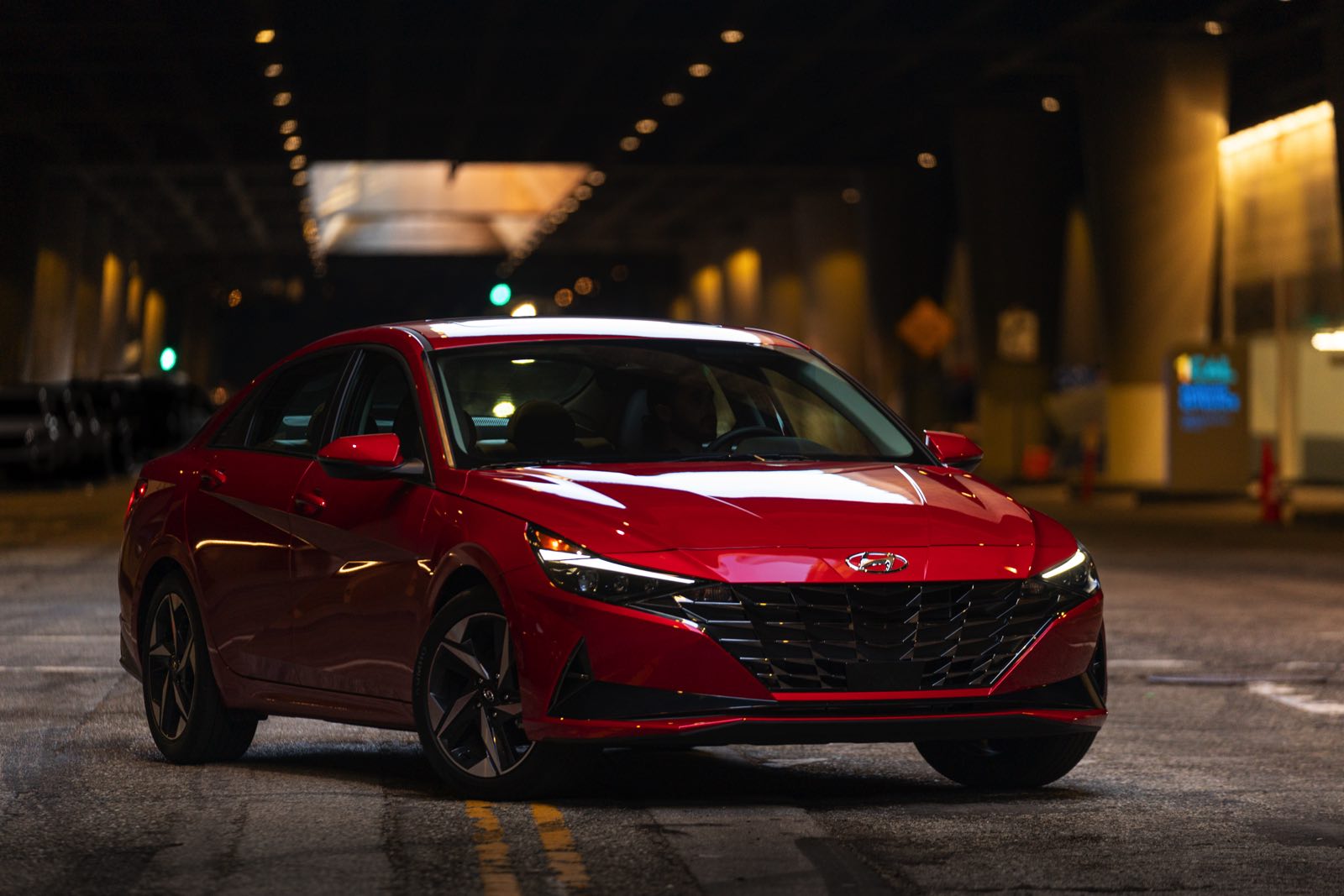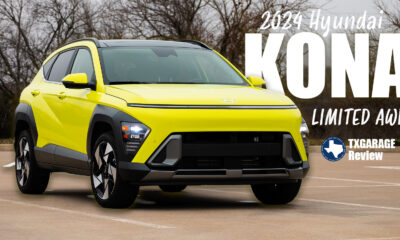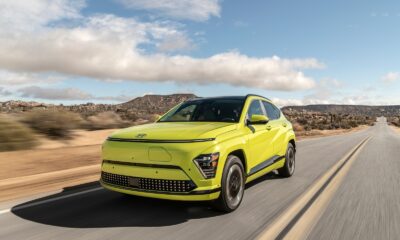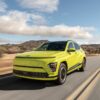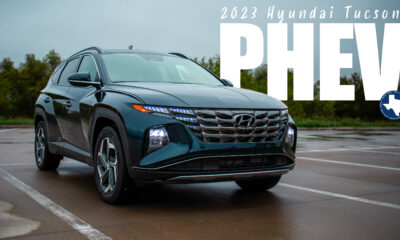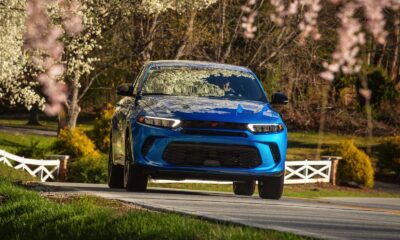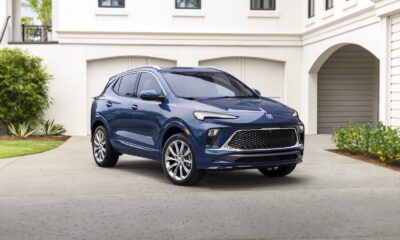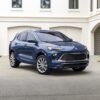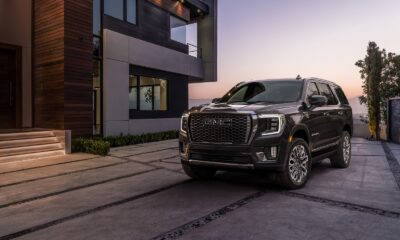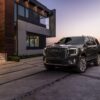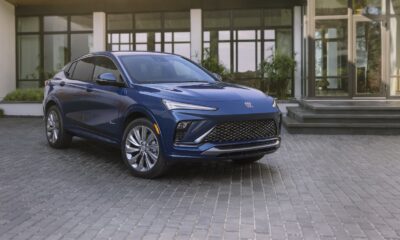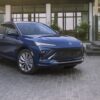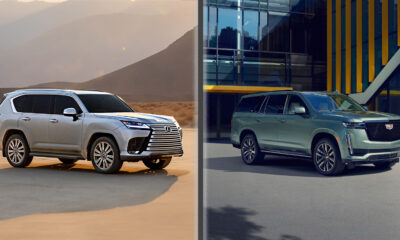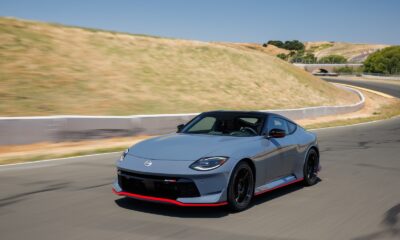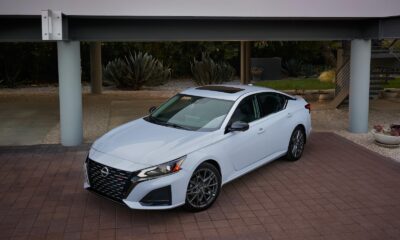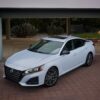Car Reviews
Hyundai Elantra: Pretty and Practical
Hyundai Elantra:
Pretty and Practical
Any psychiatrist will tell you that you’re not losing your mind if you think car prices have gone crazy.
According to Kelly Blue Book, over the past three years the mean new vehicle price skyrocketed 29.7% to $49,388. Although the price of used vehicles abated the past few months, those still average $33,341, or $10,046 more (43%) than if typical depreciation rates were in play, according to research from CoPilot, a car shopping app.
People living on budgets justifiably view those trends with trepidation, but unpack the numbers a little and they are not necessarily as alarming as they seem. COVID and supply-chain disruptions produced two linked dynamics. Many middle-class buyers left the market while manufacturers and dealers discovered greater profits could be realized by focusing on high-end buyers.
Dealers have been blessed with an abundance of buyers who, while they may complain bitterly about inflation and fuel prices, are willing to plunk down $70,000 to $100,000 for a gas-guzzling pickup or SUV.
American manufacturers have largely abandoned younger buyers and those beginning families by eliminating nearly all sedans from lineups. Asian and European automakers have not.
On the rare occasion an affordable model is available from the factory, dealers are loathe to stock it. It takes just as much work – plus a fair amount of capital – to sell a pickup with $10,000 in profit as it does a sedan with a $1,000 markup; sometimes more, because securing financing for mid-income buyers can be tricky.
Here’s the good news: For substantially less than $30,000 one can still find a highly efficient, comfortable, and pleasant car with a great warranty and impeccable safety credentials. Our case in point is the 2023 Hyundai Elantra, which happens to be one of the prettiest cars on the road.
Affordable, but nice
Hyundai mixes and matches four engine types, four transmissions, and a nice bag of goodies to come up with six Elantra models. A base SE starts around $21,700, delivered. Our midline tester, a Limited, stickered out at $27,655. A sporty N Line is about $1,000 more.
The sweet spot in the lineup is a Blue Hybrid that averages 50 mpg, drives beautifully, and costs $25,650. The most one can spend on an Elantra is the Limited Hybrid, which sells for about $30,250.
All Elantras come with five stars on government five-star safety ratings and the best warranty in the business: 10 years/100,000 miles powertrain and five years/60,000 miles bumper-to-bumper coverage. They also all come with motor-driven power steering, one reason why Hundai’s and Kia’s lane-keep systems are as good as the best coming out of Europe.
They also come with an astounding list of standard features, including an immobilizer to (finally!) deter thieves. Things like remote keyless entry, high-beam assist, blind-spot avoidance assist, lane-keep assist, a rearview camera, forward collision-avoidance assist, four-wheel disc brakes, hill assist control, cruise control, Bluetooth hands-free control with wireless Android Autotm and Apple Car Playtm are all standard on the base model.
None of that is a reason to buy the Elantra. That it is quiet, nimble, and absorbs road imperfections like a car costing twice as much, on the other hand, certainly is.
Most critics, who assume others also drive like frustrated racers, knock down the base Elantra because of a “breathless” 2.0-L 4- cylinder engine that puts out 147 hp and 132 ft.-lb. of torque. Admittedly, in the day of smoke-belching, fuel-sucking, 600-hp motors, those are diminutive figures.
Blonde Bride and some of my single-parent friends found the engine more than adequate. I concur. The car accelerates quickly into freeway traffic and is quick on its feet around town. At stop lights it has a small rattle like it is a diesel, but that seems a minor annoyance.
It has plenty of power for a car weighing 2,800 lbs., about half that of a Chevy Suburban which, by the way, earns four stars – not five – for safety.
“Wait! What?” I can explain that, but no one listens when I do because we, as Americans, are sure size always matter. We are prone to confuse the act of thinking one is right with the actual act of thinking. OK, rigid sub-frames don’t absorb energy. They transmit it; so they don’t protect passengers as well as engineered crumple zones. Then there are rollovers. Some are lethal. Now can we move on?
Move up the model line and Hyundai starts adding features normally reserved for luxury or near-luxury vehicles, like push-button start, automatic power windows, heated seats, phone charging pads, upscale sound systems, parking collision avoidance, auto-dimming rearview mirror, ambient LED interior lighting, LED headlamps, sunroofs.
Best hybrid for money
In terms of fuel economy, the EPA estimates that the 2023 Elantra with the 2.0-liter four-cylinder engine will earn up to 33 mpg in the city and 42 mpg on the highway. Models with a 201-hp turbocharged 1.6-liter four have estimates as high as 28 mpg city and 36 on the highway. The thriftiest hybrid Elantra is rated at 53 mpg city and 56 highway, according to Car and Driver.
A two-time winner of U.S. News and World Report’s Best Hybrid Car for the Money, the Elantra also comes highly recommended by Consumer Reports, which likes the car’s fuel economy, secure handling, sure-footed braking, transmission, and cabin controls.
The only thing CR did not like was the car’s standard headlights. Move up to the Limited Hybrid and you get LED lights front and rear, heated outside mirrors, heated and ventilated front seats, an 8-speaker Bose premium sound system, voice recognition, and Hyundai’s highway drive assist, which makes highway trips waaay more relaxing.
That is a lot of car for the money.
Most people these days bring about $10,000 in cash or trade value. Do that with even the most expensive Elantra and your monthly payment will be about half the national average of $725 or two-thirds the average used car payment of $516, according to the credit reporting agency Experian.
In general, hybrid drivetrains are far more reliable than basic internal combustion engines because the electric motor, which has few moving parts and almost no internal friction, does most of the heavy lifting. It does the bulk of its work on takeoff and during acceleration. The motor serves as the starter but will not spin the engine until oil is circulated through the crankcase, eliminating the single largest cause of wear.
The Elantra Hybrid is one of the few high-value affordable hybrids on the market. The Toyota Corolla Hybrid is similarly priced. Both earn a combined EPA fuel economy of 50 mpg. Both save about $800 a year in fuel costs compared to the average new vehicle, according to the EPA. Neither will have significant repair costs for at least five years.
That sounds much better than buying an older, less fuel-efficient car.
Which to buy? For me, it’s a close call. I like the Elantra’s looks and warranty. I like the Corolla because it’s a Toyota. I think it comes down to who offers the better deal.
The answer is always the same for those who each day must solve how to get to work, ferry kids, pay the mortgage, and buy groceries.
Shop like crazy.



